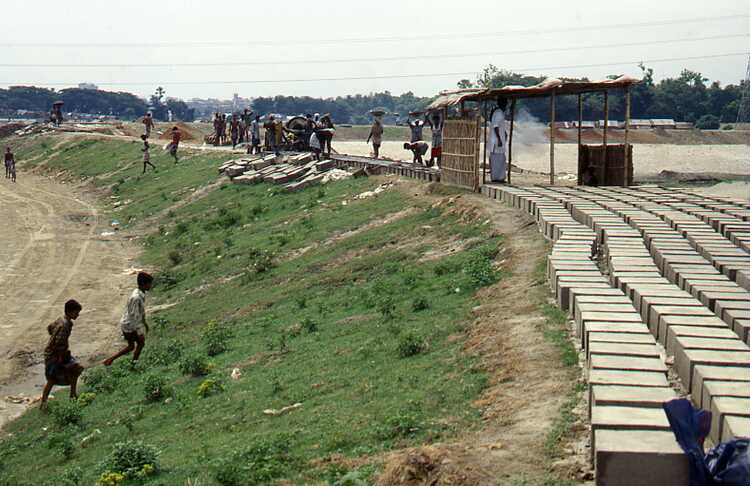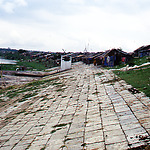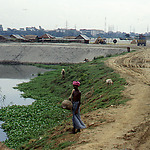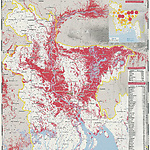In Bangladesh, flooding is viewed differently than we are used to. During a normal rainy season, about a third of the country is inundated due to the heavy rainfall and the large river discharges. The country can also be hit by floods from the sea during tropical storms. If the rainy season is very wet, two-thirds of the country can be inundated for a certain period. In 1987 and 1988, this type of flooding occurred, but it was much worse from July to September 1998. Then, two-thirds of the country was inundated for more than two months. The number of victims was high and the damage was enormous.
As in many other Asian countries, Bangladesh is also experiencing a strong migration to the cities. For example, in the past decades the capital Dhaka has grown into a city with around 21 million inhabitants. In 1987 and 1988, Dhaka also suffered greatly from the floods. At that time, it was decided to build a ring dike around Dhaka. Later on, it was decided to make a western ring dike and an eastern one. The western ring dike was completed in 2001. More than 15 million people now live in the area surrounded by it. The eastern ring dike has yet to be built.
The western dike was built for a probability of flooding of 1 time in 50 years. Although this has required a huge investment for Bangladesh and the dike has also been constructed well, the chosen safety is very risky. At the moment that the dike would fail, there will be water in the rivers and flooded areas around Dhaka for at least ten kilometres, so that the trapped residents would have nowhere to go. Given the enormous costs, it cannot be expected that the dike will be substantially raised and reinforced. However, it is possible to do much more in terms of refuges, evacuation plans, timely flood forecasts, etc. Although the problem is well recognised by those involved, unfortunately, with the exception of the good flood forecasts, not many of the other necessary measures have been implemented and in this case too, the measures will be taken when the horse has bolted.
There is also danger lurking behind the dike, although this danger is much less significant. Because there is now a dike around the largest part of the city, the excess precipitation water must be discharged through this dike to the surrounding rivers by means of large discharge sluices and four large pumping stations. In itself this is of course quite possible, but there is a new development going on at a large scale. Due to the greater safety that the dike has brought about, project developers have become very interested in building in Dhaka. To do this, they raise low parts of the city with about two meters of sand and then they build on the landfill.
By doing this, they remove storage area and subsequently accelerate the discharge of excess rainfall from their raised, built-up and paved area. The low parts of the city, where the poor population usually lives, are now increasingly and more deeply submerged. With the ever decreasing storage capacity, the excess water cannot be discharged quickly enough through the discharge sluices and pumping stations. The government sees no way to do anything about this development, so that in the long-term, the poor population in various places will have no choice but to seek a safer place to live elsewhere. In a completely overpopulated country, however, this is no easy task.




